Travel
Angkor’s best time: dry comfort or wet serenity ?
The key takeaway: Angkor’s dry season (November-February) offers ideal weather and iconic views but comes with peak prices and crowds, while the wet season (June-October) provides lush landscapes, fewer tourists, and up to 30% lower costs. Choosing between them depends on prioritizing comfort or budget and solitude, as each season transforms the ancient site into a unique visual masterpiece under dramatically different conditions.
Choosing the best time to visit Angkor can feel overwhelming: should you brave the scorching heat of the dry season for clear skies or embrace the monsoon rains for lush landscapes and solitude? This seasonal guide breaks down Angkor’s two distinct periods—November to May’s dry season, marked by sunny days and soaring crowds, and June to October’s wet season, with dramatic clouds and vibrant greenery—to help you balance weather, costs, and tranquility. Uncover exclusive insights: from golden-hour photography during peak season to budget-friendly escapes in September’s downpours, ensuring your visit aligns perfectly with Angkor’s magic, no matter the month.
- Understanding Angkor’s two main seasons
- The dry season: comfort and clear skies (November to May)
- The wet season: lush landscapes and tranquility (June to October)
- The best time of day to explore the temples
- Essential tips for your Angkor visit
- So, what is the best time to visit Angkor?
| Feature | Dry Season (November – May) |
Wet Season (June – October) |
|---|---|---|
| Weather | Dry, low humidity, sunny skies | Hot and humid, with frequent but short rain showers |
| Crowd Levels | High to very high, especially Nov-Feb | Low, offering a peaceful experience |
| Landscapes | Dry, dusty, golden-brown hues | Lush, vibrant green, full moats with reflections |
| Prices | Peak prices for flights and hotels | Lower prices and frequent deals available |
| Best for… | Travelers prioritizing comfortable temperatures | Photographers, budget travelers, and solitude seekers |
Understanding Angkor’s two main seasons
Choosing when to visit Angkor involves balancing comfort, scenery, and crowd levels. The Cambodian dry season (November-May) promises sunny skies and moderate temperatures, but attracts large crowds. Conversely, the wet season (June-October) delivers dramatic landscapes and tranquility, though rain showers are frequent. Each season creates a distinct experience of the temples.
A tale of two seasons: a summary for travelers
Angkor’s seasonal contrasts become immediately apparent in this comparison. The dry season’s predictable weather makes temple exploration comfortable, but visitors must contend with packed sites and premium pricing. Meanwhile, the wet season transforms the environment into a photographer’s paradise while offering budget-friendly options and quieter access to iconic monuments.
Those prioritizing comfort will appreciate dry season temperatures, particularly during November-February’s cooler period when daytime highs rarely exceed 30°C. However, landscape enthusiasts might prefer the wet season’s emerald hues and reflective moats, which create unique photo opportunities. Budget travelers benefit from reduced accommodation costs during June-October, though weather unpredictability requires flexibility.
Consider what matters most before visiting. Will you endure crowds for guaranteed sunshine? Or embrace seasonal rains for exclusive access and dramatic natural beauty? The table above summarizes key considerations, but personal preferences ultimately determine the ideal timing for your Angkor adventure.
The dry season: comfort and clear skies (November to May)
The dry season at Angkor spans from November to May, split into two distinct phases. The initial months offer ideal weather for exploration, while the later period challenges visitors with extreme heat but fewer crowds. This season shapes the visitor experience by balancing comfort, accessibility, and scenic beauty.
The cool and pleasant peak season (November to February)
November to February marks the most popular time to visit Angkor. Temperatures range from 21°C to 32°C, with cooler nights around 20°C. Low humidity makes temple visits comfortable despite daytime warmth. This period aligns with major events like the Angkor Wat International Marathon (December) and the Angkor Photo Festival (November/December).
Angkor Wat’s sunrise points are packed during these months, especially around Christmas, New Year, and the Chinese New Year. Early bookings for accommodations are essential, as prices peak. For those prioritizing weather over crowds, this is the prime window for clear blue skies and optimal photography. The dry climate enhances the visual drama of temples like Banteay Srei, where intricate carvings stand out under golden light.
The hot and dry shoulder season (March to May)
By March, temperatures climb above 40°C, transforming the landscape into a dry, dusty terrain. The heat intensifies in April and May, making midday temple visits challenging. However, this period sees significantly fewer tourists, allowing quieter exploration of iconic sites like Angkor Wat and Ta Prohm. Remote temples such as Beng Mealea, often inaccessible during the wet season, become easier to reach.
Despite the heat, costs drop compared to peak season. Cultural events like the Royal Ploughing Ceremony (early May) and Visakha Puja (May/June) add unique experiences. Travelers who tolerate heat can enjoy lower prices and shorter lines, though hydration and early-morning visits become critical. The sandstone walls of temples grow scorching to the touch, but the reduced haze allows sharp, unobstructed views of distant structures.
Dry Season at a Glance
- Pros: Excellent weather from November to February, clear blue skies for photos, ideal for walking, accessible paths to remote temples, sunrise/sunset opportunities.
- Cons: High tourist numbers, higher costs, extreme heat from March to May, dry landscapes, dust reduces visibility.
Choosing between these sub-seasons depends on personal priorities. The cool months guarantee comfort and iconic visuals but demand tolerance for crowds. The hotter months offer solitude and cost savings, rewarding those who embrace the heat with unique perspectives of Angkor’s grandeur. For photographers, the dry season’s clear skies create unmatched opportunities to capture the temples’ architectural details against dramatic skies.
The wet season: lush landscapes and tranquility (June to October)
Angkor transforms dramatically during the wet season. Short, intense afternoon rains nourish the landscape, creating vivid greenery and dramatic skies. For those seeking serenity over crowds, this period offers a unique opportunity to experience the temples in a different light. The reduced number of visitors allows for a more personal connection with the ancient ruins. Even iconic sites like Angkor Wat reveal sharper textures in rain-soaked bas-reliefs, highlighting details often overlooked in drier months. At Ta Prohm, the combination of moisture and overgrown roots enhances the jungle-temple fusion, making it feel like a living entity.
Rainfall fills temple moats, creating mirror-like reflections of Angkor’s architecture. Cloudy skies soften harsh sunlight, ideal for photography. While humidity remains high, mornings often start clear, making early exploration rewarding. This is the perfect time for travelers prioritizing atmospheric beauty and solitude. At Preah Khan, water gathers in courtyards, amplifying the contrast between weathered stone and vibrant surroundings. Even walking through puddles becomes a sensory experience, with ripples echoing the passage of time.
Embracing the green season
- Pros: Spectacular green scenery, dramatic skies and reflections for photography, significantly fewer crowds, and lower prices.
- Cons: High humidity, short but heavy daily downpours, some remote paths might be muddy.
The wet season’s charm lies in its contrasts. Afternoons may bring sudden downpours, but these often clear by evening, revealing vibrant sunsets. The rain revitalizes the jungle, making paths glisten with moisture and moss. Visiting early in the day avoids the heaviest showers while capturing quiet moments at sites like Angkor Wat. Evenings reward visitors with fiery skies over temples, creating striking photo opportunities. At Phnom Bakheng, the interplay of light and clouds during golden hour becomes particularly mesmerizing.
Photographers benefit from diffused lighting and reflective waters. The lush backdrop contrasts sharply with dry-season aesthetics. Fewer tourists mean unhurried exploration and better sunrise vantage points. Waterproof gear and quick-drying clothing become essential companions during sudden downpours. Lightweight ponchos, available at local markets, offer practical protection without bulk. For adventurers, the season also unlocks access to seasonal attractions like the floating villages on the Tonle Sap, where stilted homes rise above floodwaters.
Local guides often share lesser-known spots during this season. Hidden corners of Angkor become more accessible without foot traffic. For those embracing the unpredictable weather, this season reveals Angkor’s raw, untamed beauty. At Banteay Srei, the red sandstone glows under cloudy skies, while the surrounding forest feels more immersive. A spontaneous walk through the less-frequented Bakan shrine area becomes a meditative journey, with moss-covered pathways and the steady rhythm of rain adding depth to every step.
The best time of day to explore the temples
Sunrise: the iconic but crowded experience
Angkor Wat at sunrise draws crowds for its ethereal beauty. Arriving before 5:00 AM lets you secure a spot near the reflection pool or libraries, avoiding the main throng. The golden light on the temple’s spires creates a moment of pure magic, especially as morning mist lingers around the complex.
While the central area fills quickly, the early riser’s strategy pays off. After sunrise, crowds disperse for breakfast, leaving inner courtyards quieter. Pro tip: Capture photos before 6:30 AM to beat both the sun’s harsh glare and tourist traffic. Most visitors leave by 7:00 AM, creating a quiet window for exploration of lesser-visited galleries and corridors.
Midday: a strategy to avoid the crowds
Between 12:00 PM and 2:00 PM, most tour groups retreat for lunch. This window lets you explore Bayon or Ta Prohm with rare tranquility. The heat demands hydration and sun protection, but the trade-off is worth it. The midday sun highlights intricate bas-reliefs, ideal for capturing details in carvings.
Use this time to discover lesser-known sites. Preah Khan’s vast grounds stay quiet midday, and Preah Pithu’s hidden ruins rarely attract crowds. A tuk-tuk ride to Srah Srang’s reservoir reveals serene angles of the monuments, where still waters mirror the stone architecture. Even Banteay Kdei offers peaceful exploration of its symmetrical layout without midday heat, as most tourists avoid this part of the park during peak hours.
Late afternoon and sunset: golden light and cooler air
The “golden hour” transforms Angkor’s carvings into art. For sunset, skip Phnom Bakheng’s 300-person limit and head to Pre Rup Temple. Its brick towers glow vividly as daylight fades, casting long shadows that emphasize the structure’s tiered design.
For solitude, visit a major temple just before closing. Angkor Wat’s galleries grow hushed by 5:30 PM, offering a final hour of quiet reflection as light filters through galleries. Alternatively, Phnom Bok’s hike rewards with panoramic views and fewer fellow travelers. Consider Baksei Chamkrong for an under-the-radar sunset with Angkor Wat visible in the distance. This lesser-visited spot rewards those willing to explore beyond the standard itineraries, blending history with intimate moments.
Essential tips for your Angkor visit
How many days do you need?
Angkor’s vast 400 km² site demands careful planning. A single day offers a taste of Angkor Wat’s grandeur, but you’ll miss its hidden gems. For most travelers, three days strike the perfect balance. This allows unhurried exploration of must-sees like Angkor Thom, Bayon’s enigmatic faces, and Ta Prohm’s tree-root drama. History buffs or repeat visitors might extend to five days to uncover lesser-known sites like Banteay Srei’s intricate pink sandstone carvings or Koh Ker’s towering Prasat Thom pyramid. Plan wisely—rushing means missing details etched into every stone. Book multi-day passes early during peak season to secure entry to popular sunrise spots.
What to wear and pack
Angkor isn’t just a tourist spot—it’s a living sacred space. Respect the dress code: cover shoulders and knees to avoid entry denial. Lightweight clothing (long skirts, trousers, sleeved tops) beats the heat. Pack:
- Lightweight clothing that covers shoulders and knees (e.g., long skirts, trousers, t-shirts with sleeves).
- Comfortable walking shoes—steep, uneven stairs await.
- Sun protection: hat, sunglasses, SPF 50+. Reapply regularly to avoid sunburn.
- Reusable water bottle to stay hydrated. Refill stations exist at temple gates.
- Insect repellent for dawn/dusk visits. Mosquitoes thrive near shaded ruins.
- Rain jacket if visiting June-October. Sudden afternoon showers can occur even during transitional months.
Forget flowy sarongs—strong winds and narrow steps make them risky. Opt for breathable cotton instead. A lightweight poncho doubles as rain gear and souvenir.
Visitor etiquette and responsible tourism
Angkor’s temples aren’t playgrounds. Touching carvings erodes centuries-old art—keep hands off. Climbing fragile structures risks collapse and fines up to $1,000. For a meaningful visit:
- Avoid giving money to children. It fuels exploitation networks. Donate to ethical NGOs like ChildSafe instead.
- Respect monks: Women shouldn’t touch or sit near them. Photography requires permission, especially for portraits.
- Use trash bins. Littering harms ecosystems—carry waste out, especially plastic bottles.
- Support local businesses. Choose family-run hotels like Rambutan or restaurants serving Khmer home-cooked meals.
Preserve Angkor’s magic by conserving water. Many hotels recycle water to protect temple foundations. Refill stations reduce single-use plastic, but carry a filter if unsure. Remember, your actions echo beyond your trip. A mindful approach ensures Angkor’s legacy endures for generations.
So, what is the best time to visit Angkor?
Angkor’s allure shifts with the seasons. The dry season (November–April) offers predictable weather and clear skies, ideal for sunrise photography at Angkor Wat. Temperatures range from 21°C to 32°C, with November–February being the mildest. Crowds peak during December–January, driving up prices and visitor numbers. Landscapes appear drier, lacking the lushness of other months.
The wet season (May–October) brings daily afternoon showers, transforming the park into a misty, green paradise. Fewer tourists, lower costs, and dramatic cloudscapes offset humidity and sporadic floods. September–October sees the heaviest rains but also the most striking temple reflections in rain-fed moats.
| Dry Season | Wet Season |
|---|---|
| Pros: Clear skies, cultural events, stable conditions. | Pros: Lush landscapes, fewer crowds, vivid photography. |
| Cons: High prices, dry scenery, overcrowding. | Cons: Rain disruptions, humidity, road closures. |
Preference defines the ideal time. Seek the dry season for comfort and classic views, or embrace the wet season’s raw beauty and solitude. Angkor’s magic adapts—whether under golden-hour skies or monsoon veils, its wonder remains timeless.
The best time to visit Angkor depends on your priorities. The dry season (November–May) offers sunny skies and comfortable temperatures but brings crowds and higher costs. The wet season (June–October) delivers lush greenery, fewer visitors, and lower prices, with brief afternoon showers. Each season reveals Angkor’s magic uniquely—sun-drenched grandeur or rain-fed serenity. Whichever you choose, Angkor’s timeless beauty awaits.

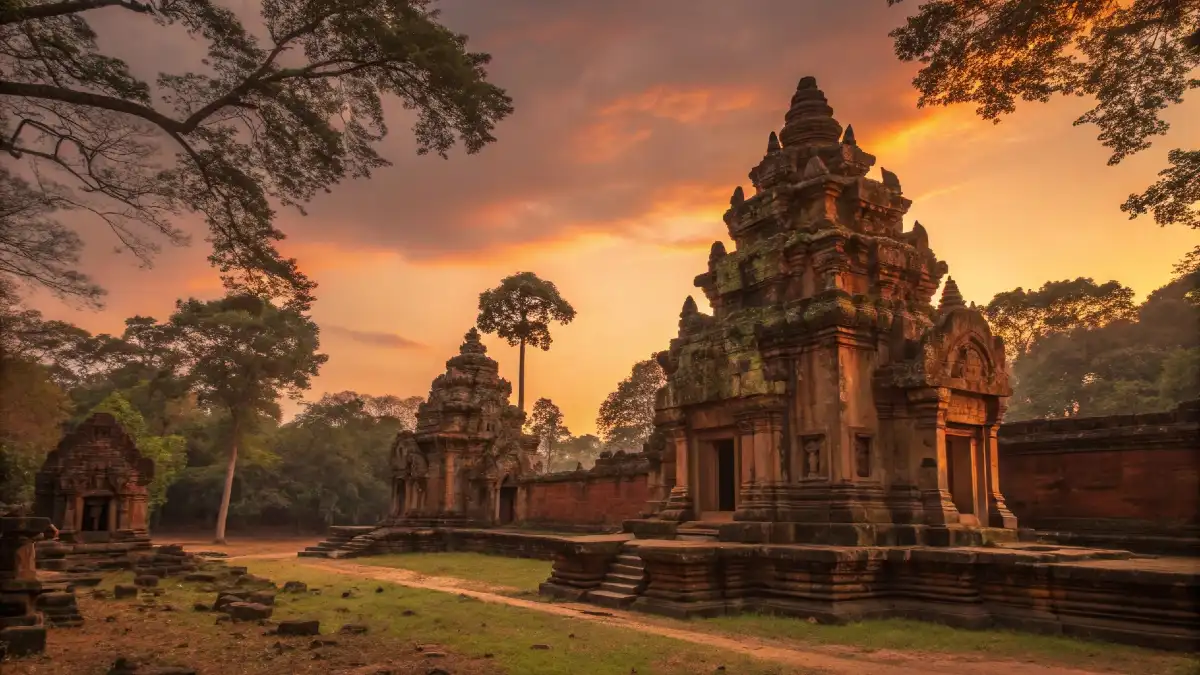
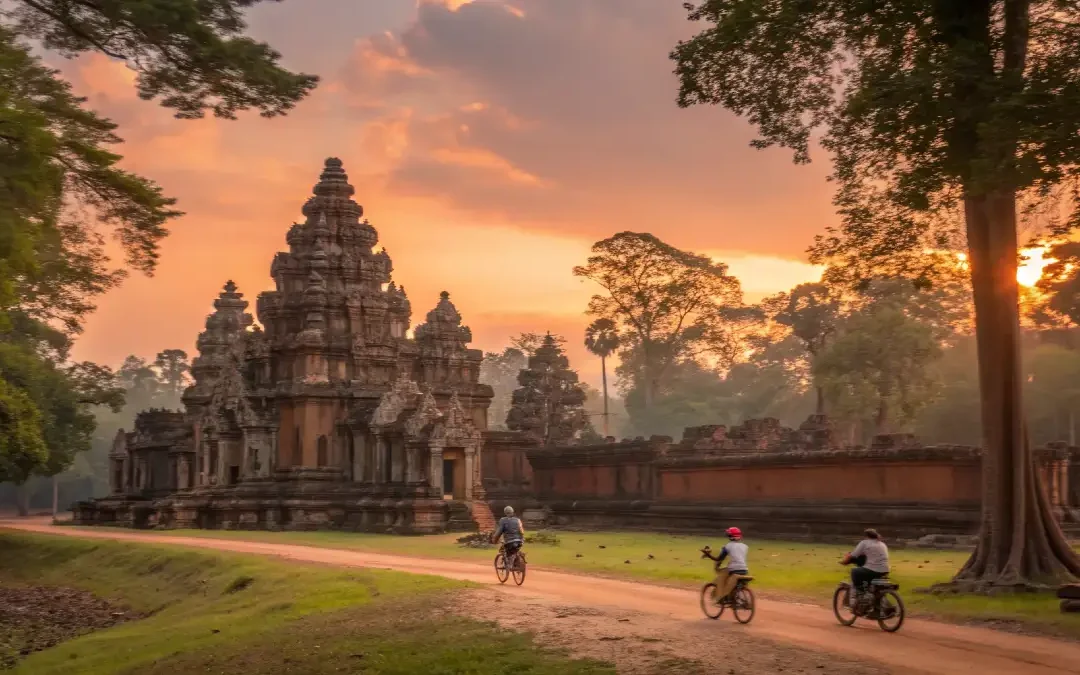
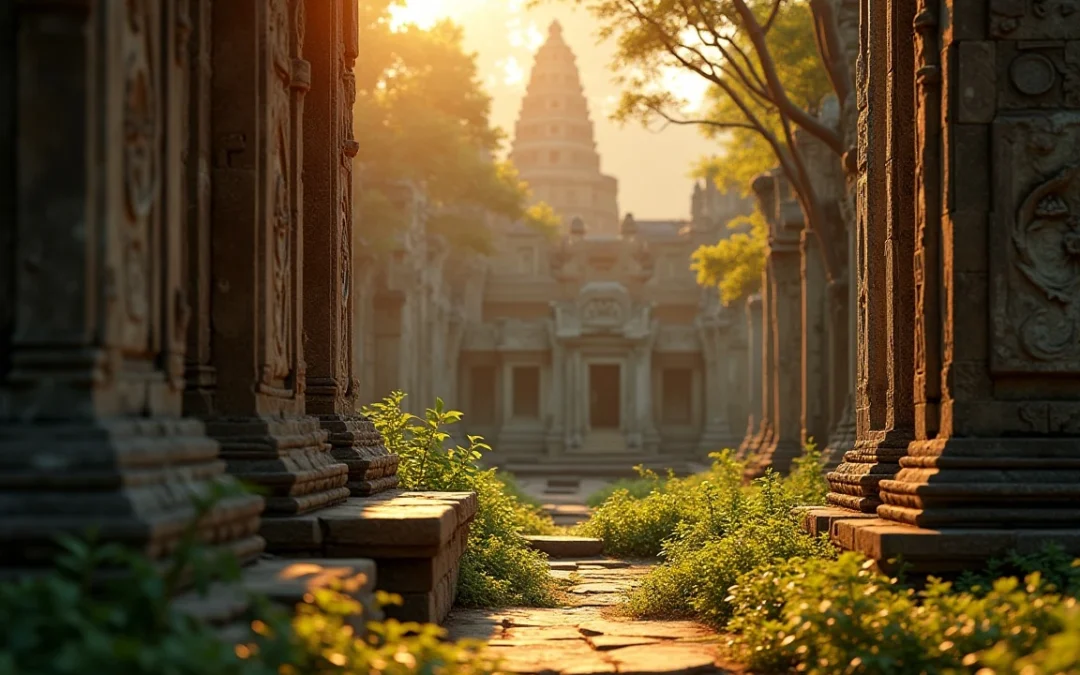
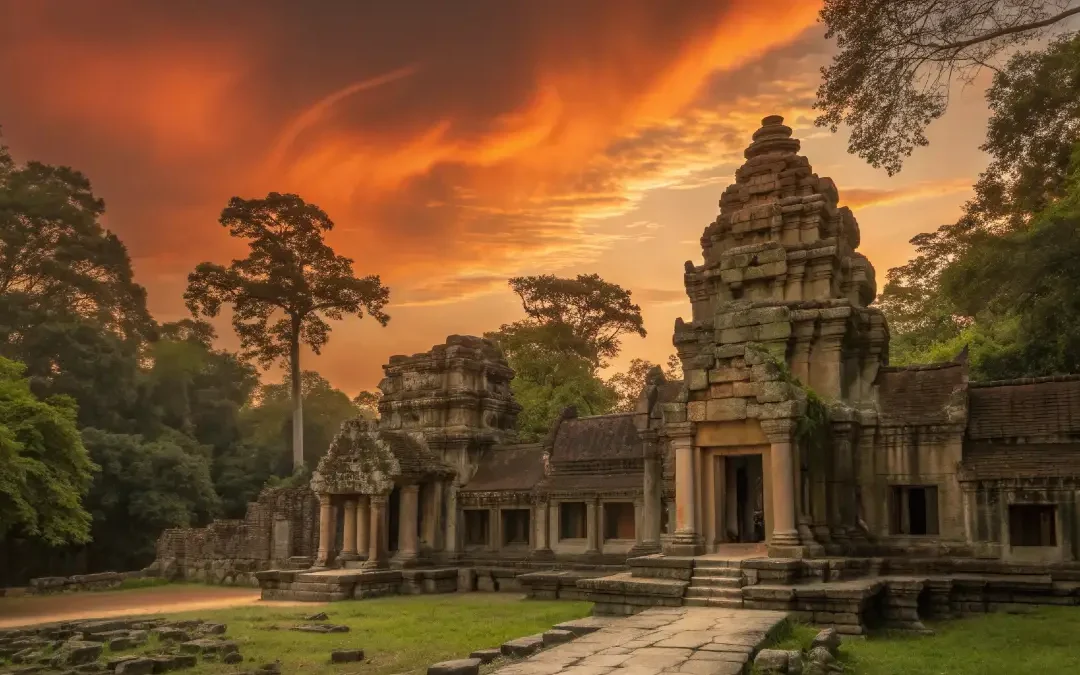
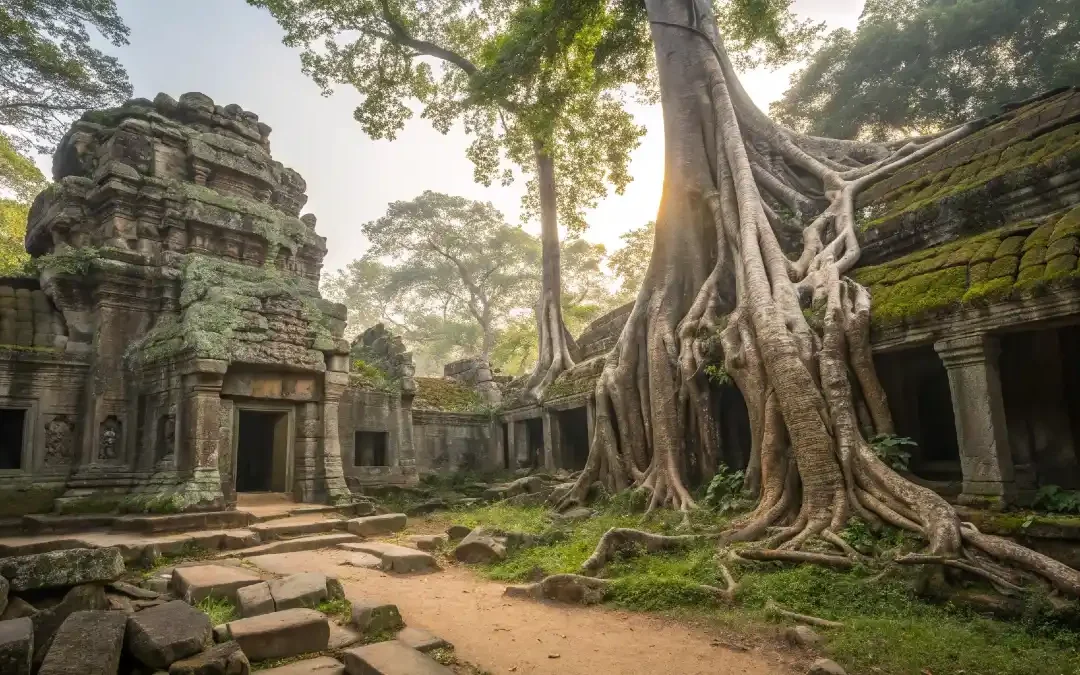
0 Comments